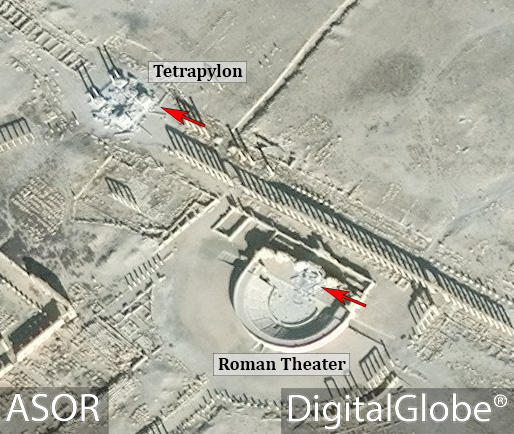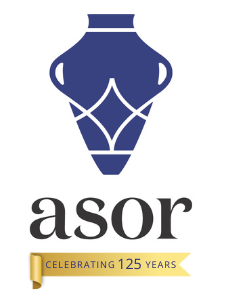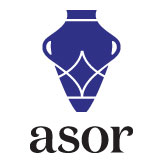


NEW DAMAGE IN PALMYRA UNCOVERED BY ASOR CHI
U. S. DEPT. COOPERATION AGREEMENT NUMBER: S-IZ-100-17-CA021
BY Michael Danti, Allison Cuneo, Marina Gabriel, and Susan Penacho
* This report is based on research conducted by the “Safeguarding the Heritage of the Near East Initiative,” funded by the US Department of State. Monthly reports reflect reporting from a variety of sources and may contain unverified material. As such, they should be treated as preliminary and subject to change.
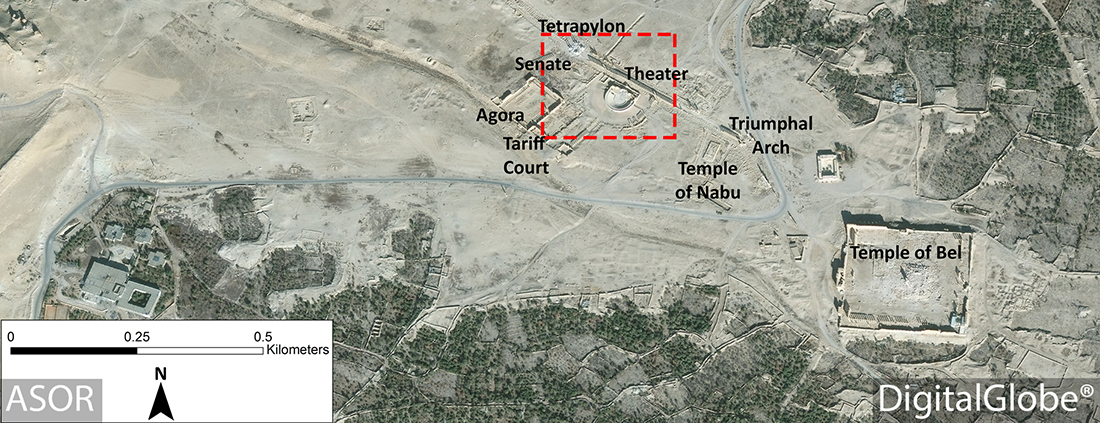
UNESCO World Heritage Site of Palmyra, with red box denoting area of new damages (DigitalGlobe; January 10, 2017)
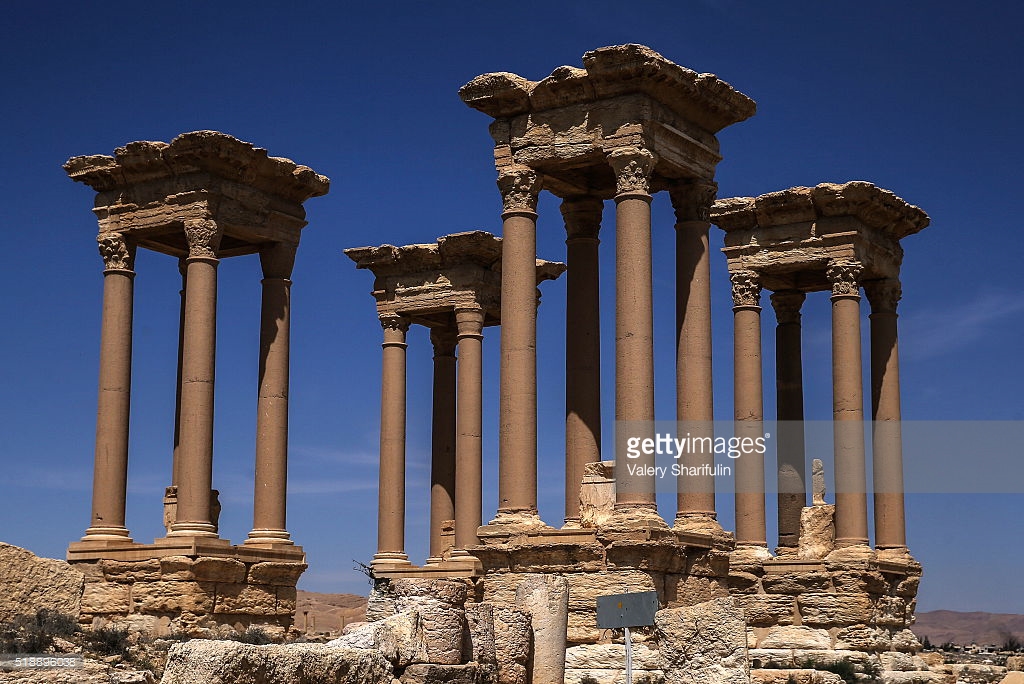
The Tetrapylon in Palmyra after the site was recaptured from ISIL by the Syrian Army (Valery Sharifulin/Getty; April 3, 2016)
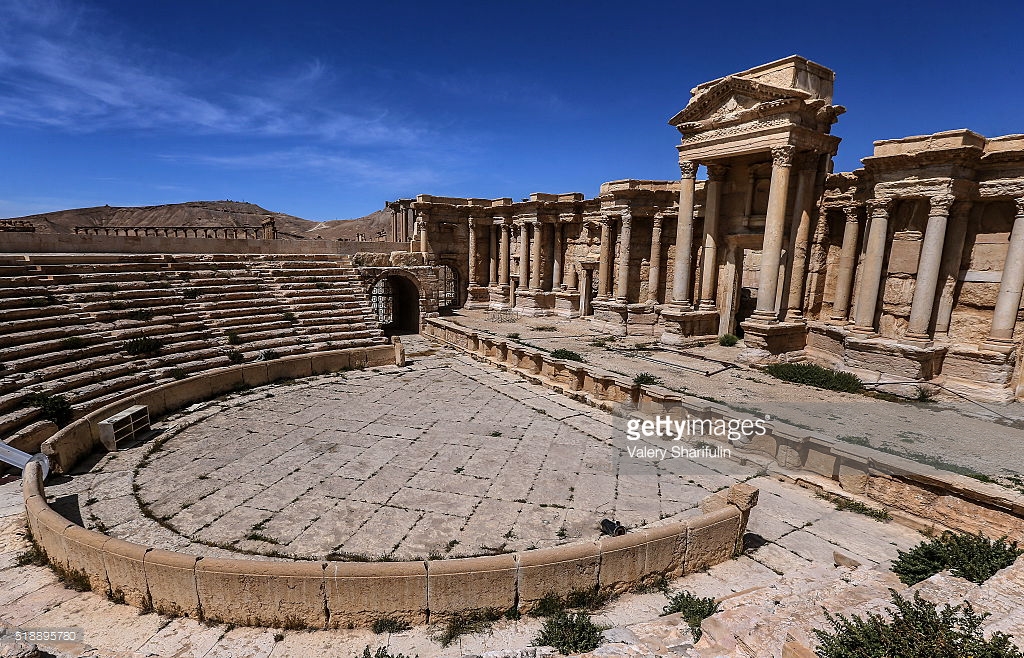
The Roman Theater facing northwest after the site was recaptured from ISIL by the Syrian Army (Valery Sharifulin/Getty; April 3, 2016)
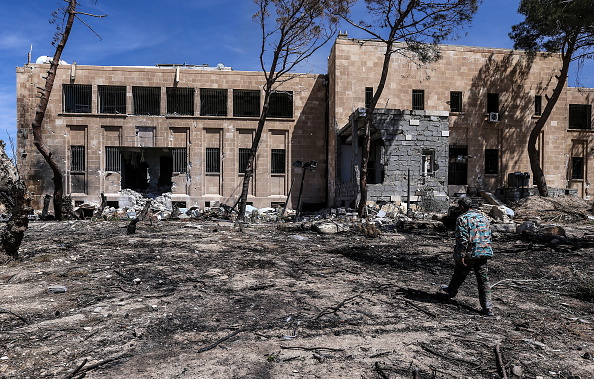
A view of the Palmyra Archaeological Museum after the site was recaptured from ISIL by the Syrian Army (Valery Sharifulin/TASS; April 2, 2016)
An assessment of the museum by ASOR CHI following the recapture of the area by Syrian regime and Russian forces detailed extensive combat-related damage to the museum, as well as deliberate destruction to artifacts in the museum’s collection. According to one report, ISIL repurposed the basement of the museum into an Islamic Court and carried out at least one execution of a woman named Fatima in the vicinity of the museum. The museum has also been rumored to have been the site of another brutal execution, that of former Director of Palmyra Antiquities Khaled al-Assad.
ASOR CHI will continue to monitor the rapidly changing situation in Palmyra and remains concerned about the plight of civilians in Tadmor.
For media inquiries regarding the recent incidents in Palmyra please contact asorhert@bu.edu .
For previous Special Reports on Palmyra please see:
ASOR CHI Special Report on the Importance of Palmyra
ASOR CHI Special Report: Update on the Situation in Palmyra
ASOR CHI Special Report: The Recapture of Palmyra
For previous reports of damage to the sites mentioned above please see:
Temple of Bel: ASOR CHI Incident Report 15-0055 in Weekly Report 33, SHI 15-0127 in Weekly Report 55-56, SHI 15-0127 in Weekly Report 57-58, SHI 16-0026 in Weekly Report 79-80, SHI 16-0041 in Weekly Report 85-86, SHI 16-0041 in Weekly Report 87-88, SHI 16-0174 in Weekly Report 119-120.
Baal Shamin: ASOR CHI Incident Report SHI 15-0096 in Weekly Report 45, SHI 15-0124 in Weekly Report 55-56, SHI 15-0125 in Weekly Report 57-58, SHI 16-0041 in Weekly Report 87-88.
Triumphal Arch: ASOR CHI Incident Report SHI 15-0138 in Weekly Report 61-62, SHI 16-0041 in Weekly Report 85-86, SHI 16-0041 in Weekly Report 87-88.
Valley of the Tombs: ASOR CHI Incident Report SHI 16-0041 in Weekly Report 87-88 and SHI 16-0174 in Weekly Report 119-120.
Sources:
Darke, D. (2006) Syria. Chalfont St. Peter, U.K.: Bradt Travel Guides.
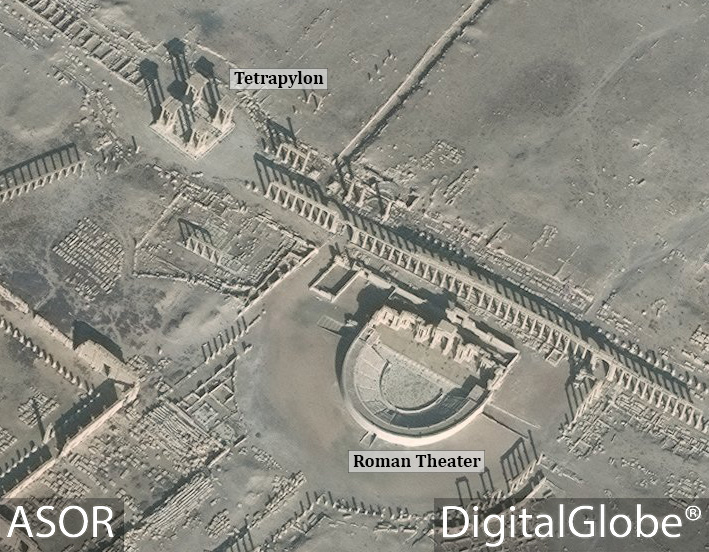
Satellite imagery of the Tetrapylon and Theater prior to recent damage (DigitalGlobe; December 26, 2016)
